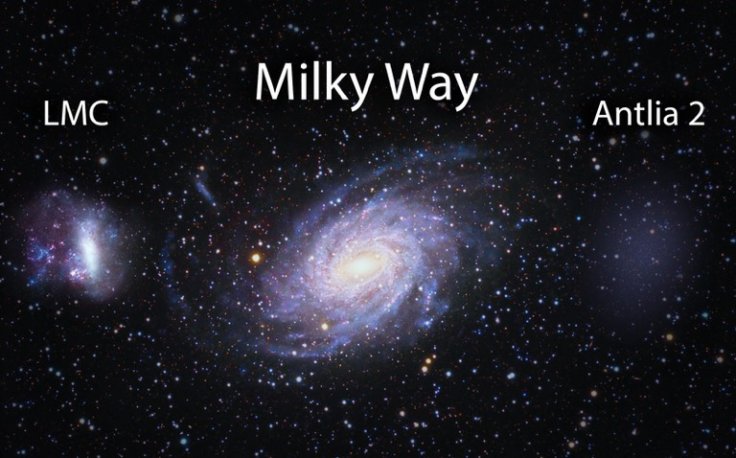
An international team of astronomers have spotted an enormous 'ghost' galaxy by using European Space Agency's (ESA) Gaia telescope that is lurking on the outskirts of the Milky Way. As per the astronomers, it is also 10,000 times fainter, in terms of the brightness.
Gaia, which was launched in 2013, spotted a massive object with an extremely low density, spotted behind the Milkey Way's disc and scientists named it Antlia 2 or Ant 2. Even though the Ant 2 is known as a dwarf galaxy, compared to other dwarf satellite of our Galaxy, it is immense. The astronauts stated that it as big as the Large Magellanic Cloud (LMC) and a third of the size of the Milky Way itself.
The lead author of this study, Gabriel Torrealba, from the University of Cambridge, said that Ant 2 is a 'ghost galaxy.' He also added that "Objects as diffuse as Ant 2 have simply not been seen before. Our discovery was only possible thanks to the quality of the Gaia data."
The team of the researcher has measured the spectra of more than 100 red giant stars just before the Earth's motion around the Sun rendered the 'ghost galaxy' unobservable for months. This process allowed them to confirm that the object they spotted was real.
The research team also revealed that the Ant 2 never comes too close to the Milky Way and it always keeps a minimum distance of 40 kiloparsecs, which is about 130,000 light-years. They also found that the ghost galaxy's mass is much lower than expected for an object of its size.
Co-author Sergey Koposov from Carnegie Mellon University in Pennsylvania, US said that "The simplest explanation of why Ant 2 appears to have so little mass today is that it is being taken apart by the Galactic tides of the Milky Way."
However, the team is yet to figure out the exact process that made Ant 2 so extended. The entire research about Ant 2 may help researchers understand how the first structures in the early Universe were created. The astronomers also believe that finding such objects will show how common such ghostly galaxies are.
In March, a separate team of astronomers found the galaxy NGC 1052-DF2 that is missing most of its dark matter that challenges currently-accepted theories of galaxy formation and seeks scientists to re-look at the nature of planet formation as well as the studies on the dark matter. Researchers first discovered the new galaxy NGC 1052-DF2 by using the Hubble Space Telescope to accurately confirm the distance of NGC 1052-DF2 to be 65 million light-years and determined its size and brightness.
After the discovery, the lead researcher Pieter van Dokkum of Yale University said, "This invisible, mysterious substance is by far the most dominant aspect of any galaxy. Finding a galaxy without any is completely unexpected."









